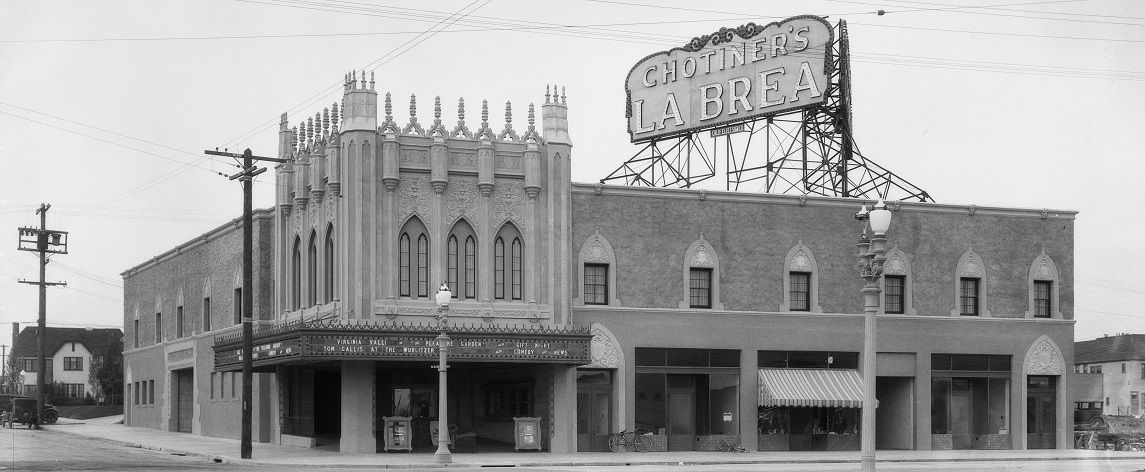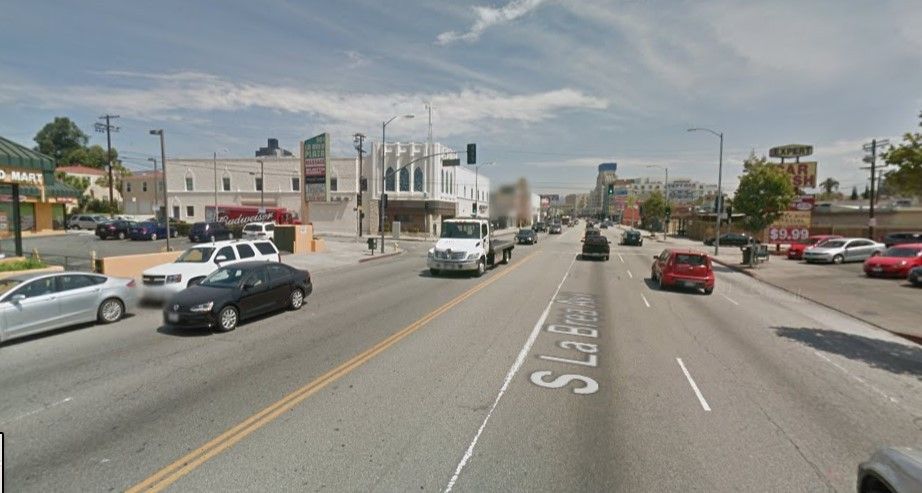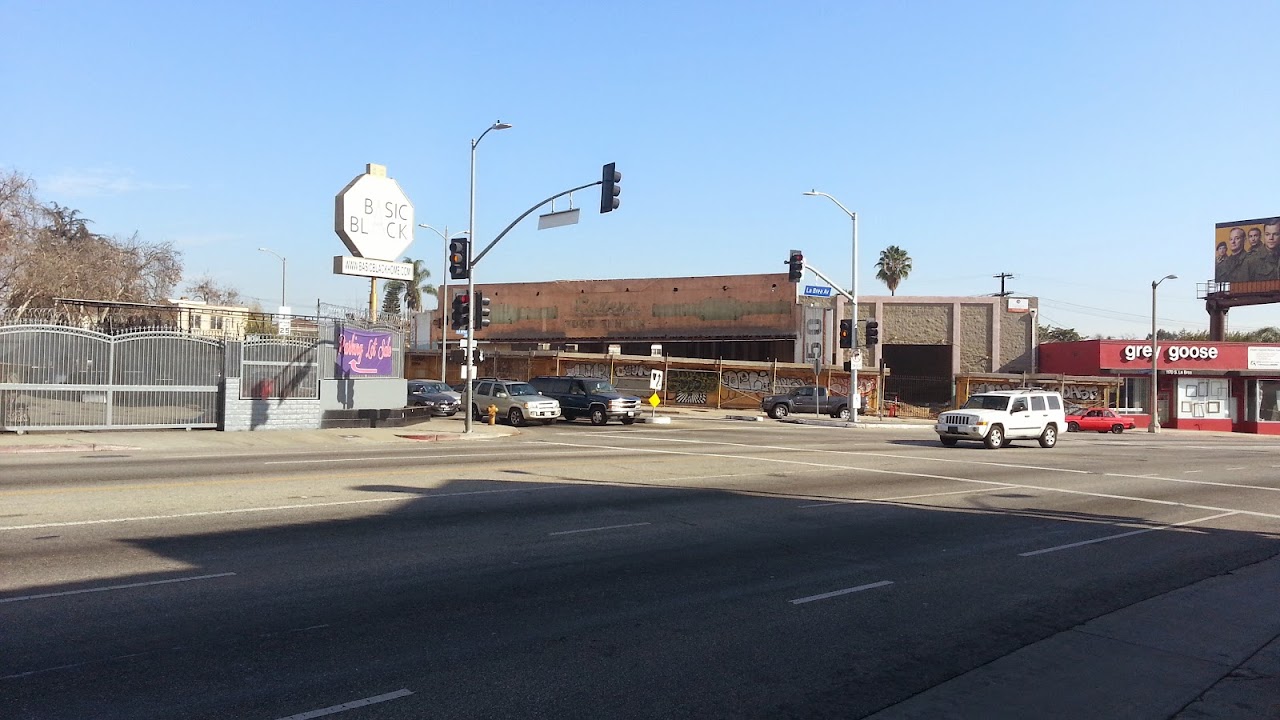Quote:
Originally Posted by BifRayRock

|
On La Brea Avenue, slightly north of Olympic Blvd. is what has been described as a Cathedral-Chapel of Saint Vibiana. (923 S La Brea Av.) This edifice has an interesting history that includes an eight foot height reduction for La Brea and that church structure. I do not believe we have seen any images of this construction, or for that matter, what appears to have been street widening, that predated the street regrading (around 1935). The church's proximity to the street suggests it predated any street widening, but this would probably been of minimal concern given the fact that the church was considered "temporary" until post WW2.
Have we seen any images of this church when originally constructed next to a presumably narrower La Brea? Searching historic aerials uncovered a 1930 image of La Brea and the church, but it is difficult to make out any obvious topographical changes, presumably because the church footprint remained static. The same 1930 image depicts a miniature golf course on the south side of 8th Street, across from Chotiner's theater, where a mini mall now stands. While no listing appears for that business in the '30 or '32 CDs, courses are listed for 128 North La Brea and 1350 S La Brea, so there were other
alternatives.
Chotiners>>
http://skyscraperpage.com/forum/show...ostcount=31519



Quote:
The story has an unusual beginning, a very eventful center, and a triumphant hopeful future. The Cathedral of St. Vibiana, located at 2nd and Main, was built in 1871. As the city grew westward in the early years of this century, plans were made to build a new Cathedral in the Wilshire district. It was decided that a Pre-Cathedral (a church used temporarily as a cathedral) would be built on La Brea Avenue. That's why we were named as we were, and located slightly away from the busy Wilshire corridor.
Plans were drawn up by architect Ross Montgomery and the contract was awarded to B.O. Kronnick Co. Ground was broken in September 1927 for the building which was to be distinctive in its Spanich Mission architecture. It was built on a gently sloping hill and the landscaping was lush and green.
The Right Reverend Msgr. John Cawley was appointed administrator and the first Masses were said on Christmas Day, 1927. The formal dedication and blessing took place on January 20,1928 with Bishop Cantwell as celebrant. The church was filled to its capacity of 600.
In 1935 the City made plans to extend La Brea to make it a through street, and notified the Chancery that the level of the street was to lowered about eight feet. It was decided to meet the specifications for street level, and the church was placed on jacks and the ground excavated under it. The building was then gently lowered to its present level. At the same time it was decided to expand as the church had outgrown its 600 person capacity. The north side of the church was removed and pillars were put in place to support the roof. This accommodated an additional 150 people and included the Altar of Repose. As the church was now eight feet lower than the rectory, a retaining wall was built to withhold the earth strain. This is why we have the staircase leading up to the Parish Hall.
Although built as a temporary chapel, intended to be adjacent to the future Cathedral, history had other plans. Delays in construction caused by the Great Depression, followed by World War II served to make Cathedral Chapel Church a permanent structure. Again changes were planned. This time, a modernication of the interior was initiated, starting with a new wood carved design over the main altar, sent from Italy, depicting symbols of the Passion. Starting at the top and moving clockwise one sees: the sponge dipped in hyssop and the ladder; the robe and dice used by the Roman soldiers; the flagella used for the flogging; a rooster; the spear which pearced Jesus' side; containers for anointing; the nails; and the Crown of Thorns. The pews were removed and replaced with light colored oak benches and kneelers. The lighting system was renovated and the church was painted both inside and out. Since the church was established, members of the parish have continued to enrich and beautify it with many artistic symbols which are not always noticed by visitors. The painting of Our Lady of the Assumption, which is now housed in the Rectory, is a painting my Murillo. The pipe organ was completely renovated through the generosity of one of the parishioners and was once considered one of the finest in the Archdiocese. http://www.cathedralchapel.org/about_our_parish/history
|
Other questions jump to mind. Most sources indicate 10th Street was renamed to honor or "promote" the 10th Olympiad. The '31 CD indicates that the renaming was in full swing well in advance of the '32 event, so that the street was renamed earlier than '31 and not as some sources blithely state 1932. One source indicates that LA's bid to host the '32 games was accepted in the Summer of '28
https://www.webcitation.org/5xFvf0uf.../eng/past.html.
Although newspapers likely report this, exactly when did the city formally rename 10th Street and was there any significant opposition to this?
A little further south of the St. Vibiana's is an interesting group of buildings with an approximate 1928 construction date. Perhaps not unlike Vibiana, these structures may have been built without contemplating street widening or significant regrading.
1101- S. La Brea.
 https://images1.loopnet.com/i2/JqIbI.../112/image.jpg
https://images1.loopnet.com/i2/JqIbI.../112/image.jpg

 https://images4.loopnet.com/i2/b-CYm.../112/image.jpg
https://images4.loopnet.com/i2/b-CYm.../112/image.jpg
The other (East) side of La Brea at Edgewood?
http://forum.skyscraperpage.com/show...ostcount=24068
http://forum.skyscraperpage.com/show...ostcount=24076

Nearby La Brea and San Vicente, circa 1936, before any substantial street modifications. La Brea, like so many other major streets received piecemeal modifications.
http://forum.skyscraperpage.com/show...ostcount=22728
BTW, NCD attribution is nice.




